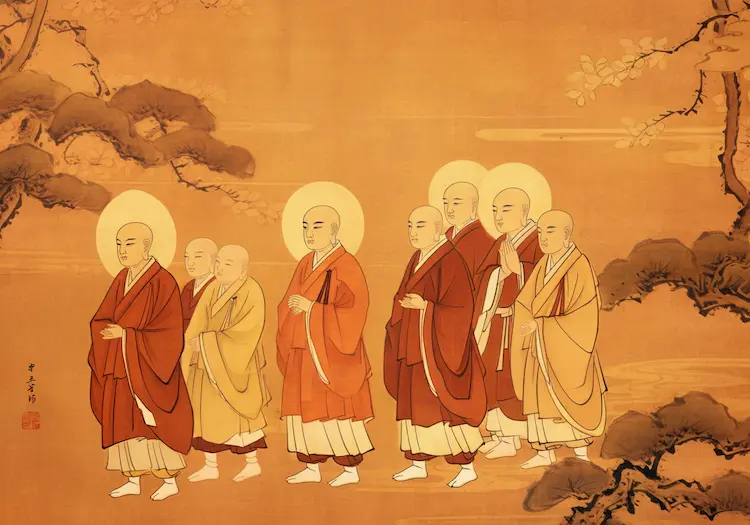Nara in the Heian Period – Legacy of the Ancient Capital
In 794 AD, Japan’s capital moved from Nara to Heian-kyō (modern-day Kyoto), marking the beginning of the Heian period. Although Nara was no longer the political center, it remained an influential cultural and religious hub throughout the Heian era. The city, with its grand temples and rich history, continued to shine as a symbol of Japan’s spiritual and cultural heritage. Let us dive into Nara’s journey during the Heian period, and discover how this ancient city retained its significance even as the capital moved elsewhere.
- Nara After the Relocation – The Role of the Ancient Capital and Cultural Impact
- The Development of Nara Buddhism and the Rise of New Sects
- Cultural Legacy of Nara and Its Influence
- Tōdai-ji and Kōfuku-ji – The Symbolic Temples of Nara
- Nara and International Exchange
- Modern Connections to the Heian Period in Nara
- Conclusion: Nara’s Enduring Heritage Through the Heian Period
Nara After the Relocation – The Role of the Ancient Capital and Cultural Impact

- The Relocation and Changes in Nara: In 794, Emperor Kanmu moved the capital to Heian-kyō to escape the influence of powerful Buddhist temples and centralize his power. This relocation marked the end of the Nara period, yet it did not diminish Nara’s importance. The temples of Nara, such as Tōdai-ji and Kōfuku-ji, continued to be vital centers of religious activity, and the city retained its status as a significant cultural landmark.
- Temples and Religious Activities in Nara: The large temples in Nara, including Tōdai-ji and Kōfuku-ji, remained powerful institutions. They were places of pilgrimage and spiritual devotion, and many influential monks continued to work from these temples, ensuring Nara remained a center of Buddhism. The city’s role shifted from political governance to becoming a place of cultural preservation and religious growth.
The Development of Nara Buddhism and the Rise of New Sects

- Nara as a Buddhist Center: In the early Heian period, Nara continued to be a primary center for Buddhism. The temples of Nara played a crucial role in preserving Buddhist teachings, maintaining connections with continental Asia, and fostering a religious atmosphere that was central to the spiritual health of the nation. Nara Buddhism, also known as “Nanto Buddhism,” held significant influence over the imperial court and the common people alike.
- Emergence of New Sects and Their Influence on Nara: As the Heian period progressed, new Buddhist sects began to emerge, such as the Tendai sect based at Mount Hiei, and the Shingon sect founded by Kūkai. These new movements brought fresh ideas and practices that contrasted with the more traditional Nara Buddhism. The great temples of Nara had to adapt to this changing landscape, with some embracing elements of the new teachings, while others focused on preserving the older forms of worship and learning.
Cultural Legacy of Nara and Its Influence
- Cultural Appeal as the Ancient Capital: Even after the capital moved, Nara remained a spiritual and cultural beacon. Many aristocrats and monks saw Nara as a place of deep cultural and spiritual importance, where ancient traditions could still be found. The idea of “furusato” (hometown or birthplace) was often evoked by those who felt a deep connection to Nara, symbolizing the continuity of cultural identity even as political power shifted.
- Artistic Preservation and Cultural Patronage: Nara’s temples were not just centers of worship but also hubs of artistic production. The sculptures, paintings, and architecture produced during this time continued to reflect the classical beauty of the earlier period. Efforts to preserve and protect these cultural treasures ensured that the spirit of Nara endured, even as new cultural influences from Heian-kyō gained prominence.
Tōdai-ji and Kōfuku-ji – The Symbolic Temples of Nara
- The Continuing Role of Tōdai-ji: Tōdai-ji remained a powerful symbol of religious authority throughout the Heian period. Despite the political shift, the temple continued to host major religious ceremonies and remained closely connected to the imperial family. The Daibutsu (Great Buddha) of Tōdai-ji, which was originally constructed to unite and protect the nation, still attracted pilgrims and played a central role in promoting peace and stability.
- Kōfuku-ji and the Power of the Fujiwara Clan: Kōfuku-ji, originally the family temple of the powerful Fujiwara clan, continued to serve as a focal point of political and religious power. The Fujiwara family, who rose to immense influence during the Heian period, maintained strong ties to Kōfuku-ji, and the temple was used for important ceremonies and rituals that underscored their authority. The continued importance of Kōfuku-ji ensured that Nara stayed relevant in the shifting political landscape of the Heian era.
Nara and International Exchange

- Nara as the Terminus of the Silk Road: Nara was the eastern terminus of the Silk Road, a place where cultural, religious, and artistic influences from across Asia converged. During the Heian period, this international exchange continued, albeit at a reduced pace compared to the Nara period. The artifacts and cultural influences that came to Nara from distant lands added to the city’s richness, creating a tapestry of influences that reflected the far-reaching connections of early Japan.
- Influence of Foreign Cultures: The relics of foreign cultures that remained in Nara during the Heian period served as a reminder of the city’s historical role in international exchange. Artifacts from China, Korea, and even Persia helped shape the aesthetic and cultural norms of the period. The presence of these objects in temples like Tōdai-ji and Shōsōin testified to Nara’s historical significance as a cultural crossroads and preserved the international flavor that characterized the city.
Modern Connections to the Heian Period in Nara
- Temples of Nara and Their Role Today: Today, Nara’s iconic temples, including Todai-ji and Kofuku-ji, continue to play a significant role in preserving the heritage of the Heian period. These temples have survived fires, wars, and the passage of centuries to remain as symbols of Japan’s enduring cultural legacy. They attract millions of visitors annually, who come to experience the profound history and spirituality embodied within their walls.
- Experiencing Heian-Era Nara: Modern visitors can experience the Heian period’s influence in Nara through cultural festivals, temple events, and exhibitions at sites like Shōsōin. These experiences offer a glimpse into the past, allowing us to connect with the spiritual and cultural heritage that has been preserved through the centuries. The reverence for the past that permeates Nara is a testament to its lasting impact on Japanese culture.
Conclusion: Nara’s Enduring Heritage Through the Heian Period
Nara’s story did not end with the relocation of the capital to Heian-kyō. Instead, it evolved into a city of enduring spiritual and cultural importance. Throughout the Heian period, Nara remained a beacon of traditional Japanese culture, a place where the past was preserved and cherished even as new ideas emerged. The legacy of Nara’s grand temples, its cultural treasures, and its role as a center for Buddhism continues to inspire those who visit. By exploring Nara today, we can walk in the footsteps of those who lived during the Heian period and gain a deeper understanding of Japan’s rich cultural history. Visit Nara, and experience the timeless legacy of an ancient capital that remains a vibrant symbol of Japan’s heritage.









